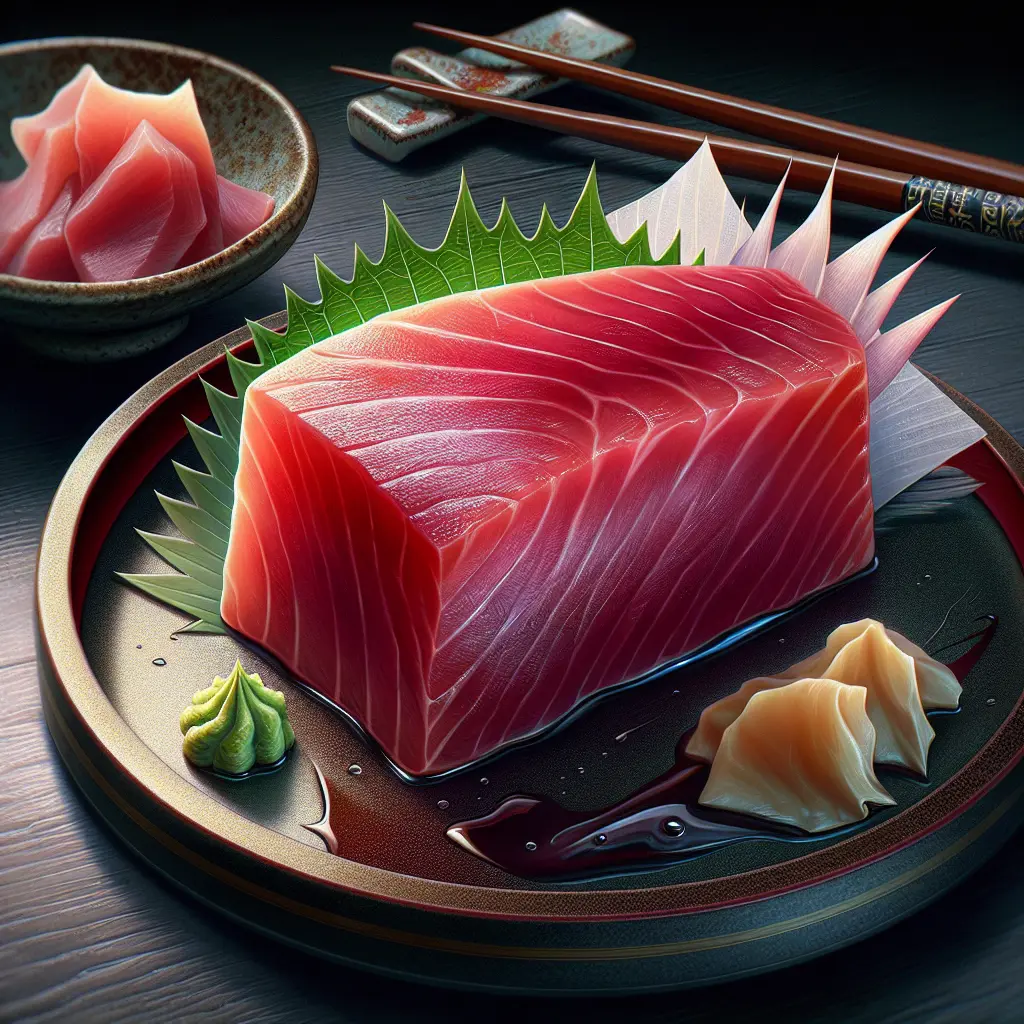Tuna Sashimi: A Culinary Masterpiece
Tuna sashimi, a culinary art form originating in Japan, has ascended to gastronomic heights, celebrated for its pristine flavor and exceptional nutritional value. This delicacy, meticulously prepared from the freshest tuna, embodies the essence of culinary simplicity, showcasing the inherent flavors of the ocean's bounty.
Nutritional Prowess of Tuna Sashimi
Tuna sashimi stands as a nutritional powerhouse, offering a remarkable array of essential nutrients within its lean and protein-rich composition. A single ounce of boneless tuna sashimi boasts an impressive 6.9 grams of protein, a crucial building block for muscle growth and repair. This protein-packed delicacy is virtually devoid of fat and carbohydrates, with a mere 0.1 grams of fat and 0 grams of carbohydrates, making it an ideal choice for those seeking a lean and nutritious meal option.
Furthermore, tuna sashimi is an excellent source of essential fatty acids, including omega-3 fatty acids, renowned for their anti-inflammatory properties. These fatty acids contribute to heart health, brain function, and overall well-being. Additionally, tuna sashimi is a rich source of vitamins and minerals, including vitamin D, selenium, and vitamin B12, all of which play vital roles in maintaining optimal health and vitality.
Culinary Versatility of Tuna Sashimi
Tuna sashimi's culinary versatility extends far beyond its traditional role as an appetizer or sushi topping. Its delicate flavor and adaptability make it a welcome addition to various culinary creations. Thinly sliced tuna sashimi can be elegantly arranged atop salads, adding a touch of sophistication and umami richness. The tuna's inherent flavor pairs harmoniously with a variety of dressings, from classic vinaigrettes to creamy sauces.
Moreover, tuna sashimi can be incorporated into main courses, lending its delicate flavor to stir-fries, pasta dishes, and even tacos. Its versatility extends to international cuisines, where it can be found in poke bowls, ceviche, and tartare. The possibilities for culinary experimentation with tuna sashimi are boundless, inviting chefs and home cooks alike to unleash their creativity.
Art of Preparing Tuna Sashimi
The preparation of tuna sashimi is an art form that requires precision and an unwavering commitment to freshness. The tuna must be of the highest quality, impeccably fresh and free of parasites. The fish is then expertly filleted, removing the skin and bones with meticulous care. The resulting boneless fillet is thinly sliced, revealing the intricate marbling and vibrant red color that are characteristic of premium-grade tuna.
The slicing technique is paramount in achieving the perfect texture and presentation. The knife must be exceptionally sharp, allowing for clean, precise cuts that preserve the delicate integrity of the fish. The slices should be uniform in thickness, ensuring an even distribution of flavor and texture throughout each piece.
Once sliced, the tuna sashimi is typically served immediately, often accompanied by soy sauce, wasabi, and pickled ginger. These accompaniments enhance the tuna's natural flavors, creating a symphony of taste that tantalizes the palate.
Conclusion
Tuna sashimi, a culinary treasure originating from Japan, has captivated taste buds and nourished bodies for centuries. Its nutritional prowess, culinary versatility, and the artistry of its preparation make it a delicacy worthy of celebration. Whether enjoyed as a standalone appetizer, incorporated into innovative dishes, or savored in its traditional form, tuna sashimi remains a culinary masterpiece that continues to entice and inspire food enthusiasts worldwide.
How many calories are in Tuna Sashimi?
Each 1 oz, boneless of Tuna Sashimi contains 31 calories.
Tuna Sashimi Nutritional Information
| Nutrient | Amount per 1 oz, boneless (28g) |
|---|---|
| Calories | 31 Calories |
| Protein | 6.9g |
| Fat | 0.1g |
| Saturated Fat | 0.1g |
| Cholesterol | 0.011mg |
| Carbohydrates | 0g |
| Dietary Fiber | 0g |
| Sugar | 0g |
| Sodium | 0.013mg |
| Potassium | 0.125mg |
| Calcium | 0.0011mg |
| Iron | 0.0002mg |
